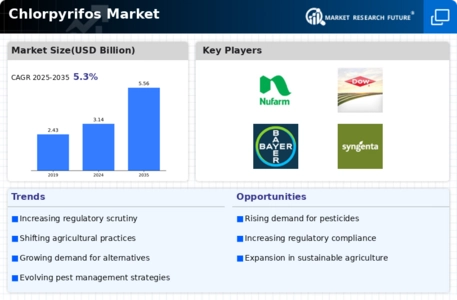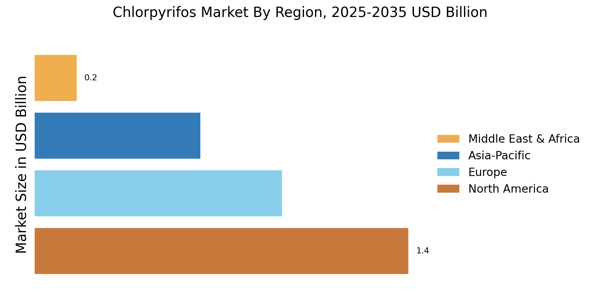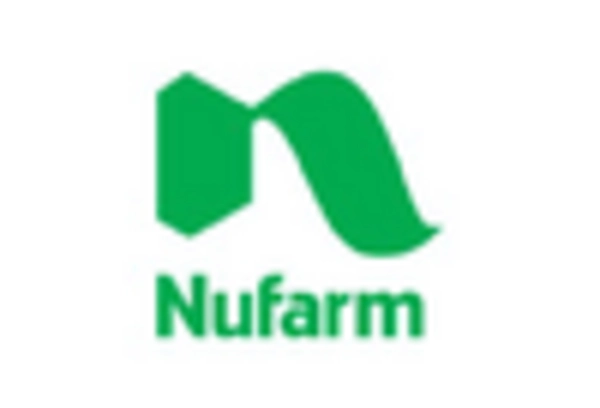Global Trade Dynamics
The Chlorpyrifos Market is also affected by global trade dynamics, which influence the availability and pricing of agricultural chemicals. Changes in trade policies, tariffs, and international agreements can impact the import and export of chlorpyrifos. For instance, fluctuations in trade relations between major agricultural producers can lead to variations in market supply. Recent analyses suggest that trade tensions may create opportunities for domestic producers to capture market share, thereby affecting the Chlorpyrifos Market. This evolving landscape necessitates close monitoring of trade policies to understand their implications for market dynamics.
Increased Agricultural Production
The Chlorpyrifos Market is significantly influenced by the rising agricultural production across various regions. As the global population continues to expand, the pressure to produce more food intensifies. Chlorpyrifos Market, known for its efficacy against a wide range of pests, plays a crucial role in enhancing crop yields. Recent statistics indicate that agricultural output has increased by nearly 20% in the last decade, with chlorpyrifos being a key contributor to this growth. This trend suggests that the Chlorpyrifos Market will likely see sustained demand as farmers strive to meet the food requirements of a growing population.
Regulatory Developments and Compliance
The Chlorpyrifos Market is subject to ongoing regulatory developments that can significantly impact its operations. Governments worldwide are increasingly scrutinizing pesticide usage, leading to stricter regulations and compliance requirements. These regulations aim to ensure the safety of agricultural chemicals for both consumers and the environment. As a result, manufacturers in the Chlorpyrifos Market must adapt to these changes, which may involve reformulating products or investing in research and development. The evolving regulatory landscape presents both challenges and opportunities for the industry, as compliance can enhance product credibility and market acceptance.
Rising Demand for Crop Protection Solutions
The Chlorpyrifos Market is experiencing a notable increase in demand for effective crop protection solutions. As agricultural practices evolve, farmers are seeking reliable pesticides to safeguard their crops from pests and diseases. This demand is driven by the need to enhance yield and ensure food security. According to recent data, the market for crop protection chemicals, including chlorpyrifos, is projected to grow at a compound annual growth rate of approximately 4.5% over the next few years. This growth reflects the increasing reliance on chemical solutions to combat agricultural challenges, thereby bolstering the Chlorpyrifos Market.
Adoption of Integrated Pest Management Practices
The Chlorpyrifos Market is witnessing a shift towards integrated pest management (IPM) practices, which combine biological, cultural, and chemical methods to control pests. While there is a growing emphasis on sustainable agriculture, chlorpyrifos remains a vital component of many IPM strategies due to its effectiveness. The adoption of IPM is expected to drive the demand for chlorpyrifos as farmers seek to balance pest control with environmental considerations. This trend indicates that the Chlorpyrifos Market may evolve to accommodate more sustainable practices while still relying on traditional chemical solutions.


















Leave a Comment